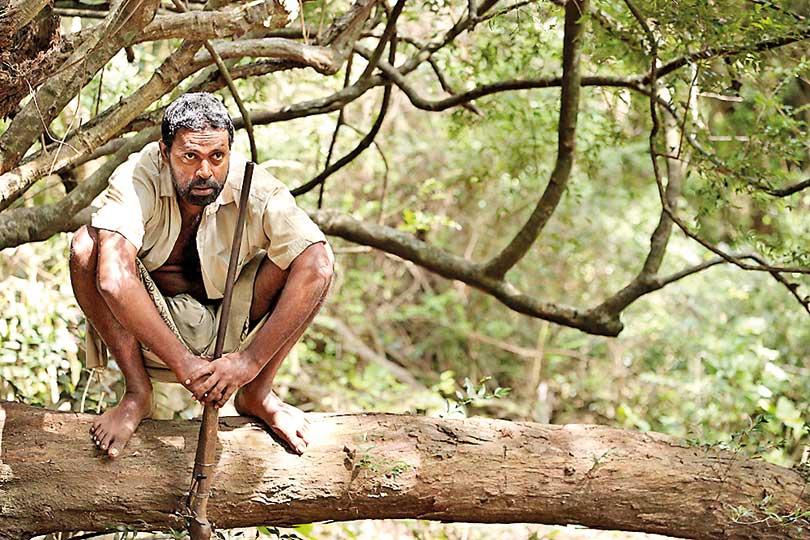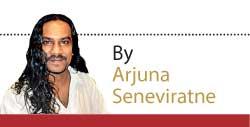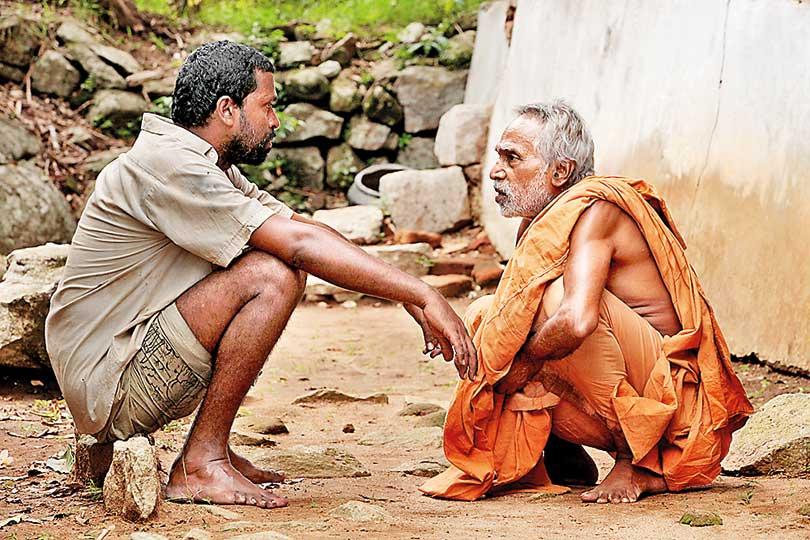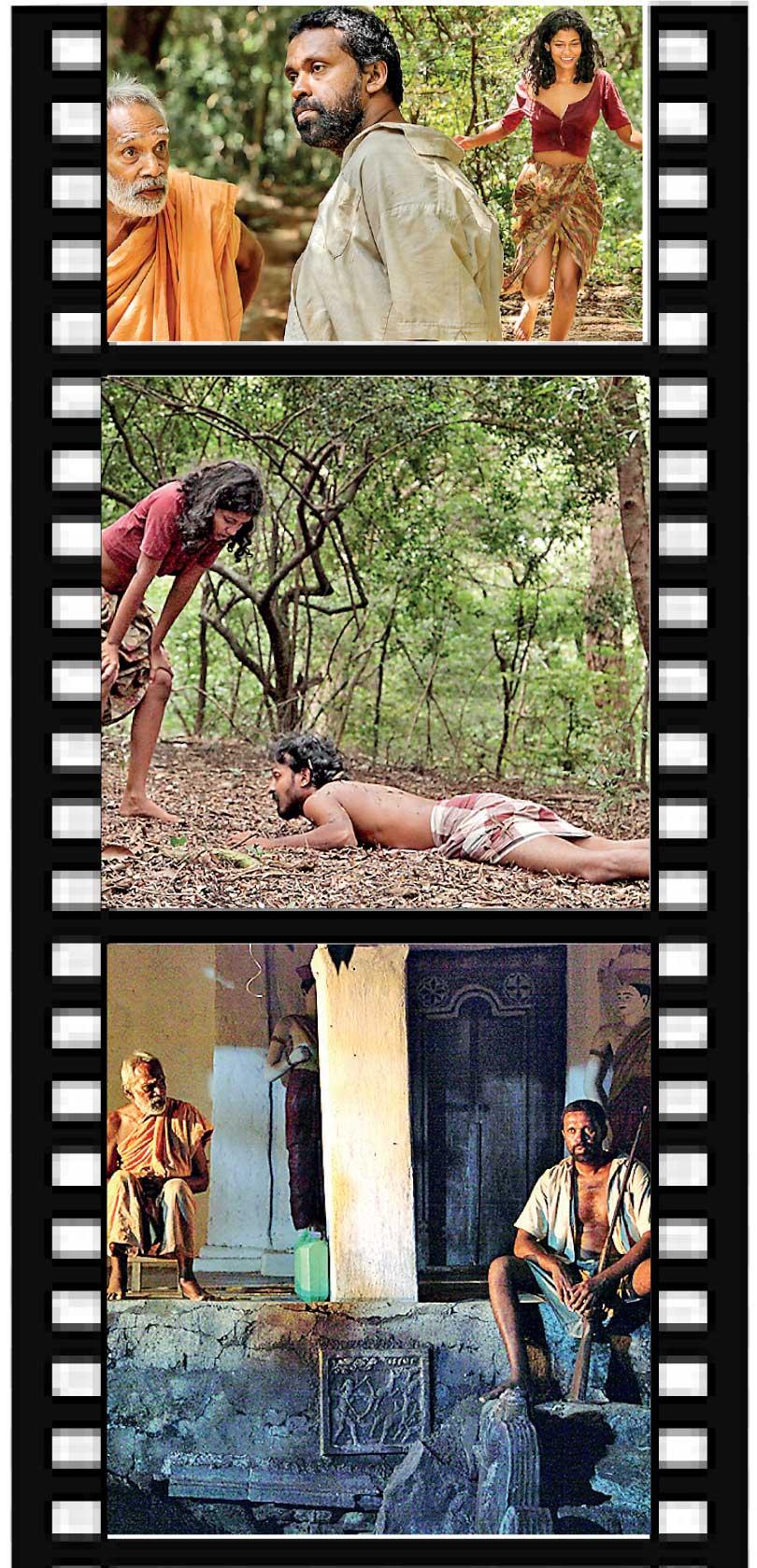Reply To:
Name - Reply Comment

 As the film comes to an end and the camera pans slowly down the trunk of a venerable old tree that witnessed lust, loss, lament, logic and life, one wonders what Prasanna Jayakody was thinking about what he was actually thinking in this last, all-encompassing and entwining drama of root, trunk and leaf as it bears silently stable and aggressively raucous testimony to the lot of iajNdj or, as I like to call it, iaj-Nj" or,;udf.a Ndjh or, one’s existential self.
As the film comes to an end and the camera pans slowly down the trunk of a venerable old tree that witnessed lust, loss, lament, logic and life, one wonders what Prasanna Jayakody was thinking about what he was actually thinking in this last, all-encompassing and entwining drama of root, trunk and leaf as it bears silently stable and aggressively raucous testimony to the lot of iajNdj or, as I like to call it, iaj-Nj" or,;udf.a Ndjh or, one’s existential self.
In this latest cinematographic effort of his, we see a maturing of his art and a great desire to trigger his audience into reconsidering established norms in his darkly thoughtful treatment of “Dadayakkarayage Kathaava”, the first story in Navagaththegama’s “Sansare Dadayakkaraya”.
Perhaps he did not think at all and simply allowed the natural inbound of the story to unwind itself through intense natural photography shot in real light, and Sumudu Guruge’s stripped down music. Perhaps, he sought to unpack human conditions through his few, minimally built up characters. Perhaps he constructed it as a reminder of things important that we have not merely forgotten but chosen to forget. Perhaps he wished to hold up a mirror into our presence on earth and its ultimate relevant-irrelevance. Perhaps he wished that we would view such thought with self-reflection and emotional and intelligent strength instead of cheaply and weakly thrilling to other people’s realities and fantasies as seems to be the case with the overload of such vulgarity that are flooding all media.
It is of no great moment how it was that the creation became and is playing in cinemas throughout the country now. In art films, one can, and, one must, read into the dramatic movement, whatever orchestra of thought, whatever process of ideas that get triggered individually by the visual and auditory import of the work.
What is of great moment though, is the subtlety through which he tickles us and tackles us into re-thinking our thinking about the more accepted norms of social inter-mesh and human-environment harmony.
Let us get some of the story-line out of the way first because for me, it is comparatively unimportant when considered against the background, nuancing of the presence of dead-life that found articulation through it.
he did not think at all and simply allowed the natural inbound of the story to unwind itself through intense natural photography shot in real light
“The villagers bow to the monk of the jungle temple – all except the hunter who provides them meat. At Vesak, Gomari ducks a sermon to frolic with her lover in the jungle. A leopard kills them. The hunter warns the monk about…” well, watch the film. It’s worth knowing how it ends, or, rather, how it always begins. *soft smiles*
The story in it’s entirety is pretty straightforward and easy to grasp but in the treatment, I saw not the obvious hunter and his counterpart only.
NO!
Once you’ve watched it, let me know if I am wrong but I saw six different hunters in it.
First, a leopard who hunts living things for food. YES! Then, a village that competes for the same fodder as the leopard. Umm? Next, importantly, a hunter who hunts animals for a life (not a living). Fourth, very importantly, a monk who hunts people for his temple for a living (not a life). Fifth, tragically, a woman who hunts men to satisfy her lust (knowing that it is right and it must, therefore, be so, regardless of consequences). Last, nature that hunts down and consumes all (regardless of whatever those who exist within its destructively constructive mesh, think of themselves or their importance in the sum total of being).
My mind then reverted back to our age old adage – fldÉpr ys;=j;a" lSj;a" flrej;a''' @æ@ wka;sug TÉpr ;uhs'
It is all subtly apparent to one who tunes into the moment in motion as it moves along the timeline of the exposition.
Such as the point where the hunter places his ear to the aforementioned tree and actually hears its sounds of life.

Such as the quick bloom of altruistic concern on the part of the hunter and adulation and understanding on the part of Gomari’s child as these two people, full of other people but alone in their souls, merge with each other’s idea of life – on the one hand, seriously lived, on the other, understandingly trusting.
Such as the dancing characters of samsara that are all captured so brilliantly in a simple pan of a very,VERY experienced… tree.
Such as a moon waxing silently eloquent into the maddened mind of an Appu that lives in all of us.
Such as the horrified realization of a man of the cloth that he is in fact, far removed from the dharma itself, far less in the practice of the dharma than the hunter himself, far more closely identified with lust than emancipation from it.
Such as the idea that the entire tapestry of life is one of automatic motions, irrelevant and irreverent dogma, disabled human conditions. Be that automation in the satiation of a questioning stomach, a questioned ritual, a solved murder or a beautifully vengeful and immensely bountiful samsara.
Such as in the idea of a beneficent and unlooked for rishi in the actual um… for lack of a better word … dadayakkaraya.
It is a softer tune that Prasanna plays in a world attuned to vociferous cacophony.
This, then, is a reminder, for all, of a more equitable idea of all our futures encapsulated in a microdrama of significant import. A more solid statement of reality than any we have recently been mowed under by a very dumb communications protocol. A very foolish and massively deluded mass media. A very iffy idea of success in existence.
And, so, according to Prasanna, it goes not with god but with life. So it goes, not with the approximately 900 months that a man who lived to be 75 years lives through but rather, with the moment that a single shot gives life to many while taking the life of one – on Vesak. So it goes, not with a gatha or a vagina but with the dharma depicted in the entirety of a much lived tree.
